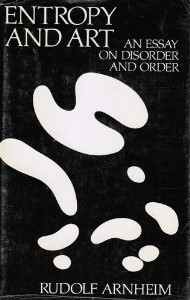Mary Ann Doane: The Emergence of Cinematic Time: Modernity, Contingency, the Archive (2002)
Filed under book | Tags: · afterimage, archive, chronophotography, cinema, contingency, entropy, film, film history, modernity, photography, time, vision

Hailed as the permanent record of fleeting moments, the cinema emerged at the turn of the nineteenth century as an unprecedented means of capturing time—and this at a moment when disciplines from physics to philosophy, and historical trends from industrialization to the expansion of capitalism, were transforming the very idea of time. In a work that itself captures and reconfigures the passing moments of art, history, and philosophy, Mary Ann Doane shows how the cinema, representing the singular instant of chance and ephemerality in the face of the increasing rationalization and standardization of the day, participated in the structuring of time and contingency in capitalist modernity.
At this book’s heart is the cinema’s essential paradox: temporal continuity conveyed through “stopped time,” the rapid succession of still frames or frozen images. Doane explores the role of this paradox, and of notions of the temporal indeterminacy and instability of an image, in shaping not just cinematic time but also modern ideas about continuity and discontinuity, archivability, contingency and determinism, and temporal irreversibility. A compelling meditation on the status of cinematic knowledge, her book is also an inquiry into the very heart and soul of modernity.
Publisher Harvard University Press, 2002
ISBN 0674007298, 9780674007291
288 pages
review (Meredith Morse, Senses of Cinema)
Comment (0)Rudolf Arnheim: Entropy and Art: Essay on Disorder and Order (1971)
Filed under book | Tags: · art, entropy, homeostasis, information theory, perception, physics, psychophysics

“This essay is an attempt to reconcile the disturbing contradiction between the striving for order in nature and in man and the principle of entropy implicit in the second law of thermodynamics; between the tendency toward greater organization and the general trend of the material universe toward death and disorder.”
Publisher University of California Press, 1971
ISBN 0520018036, 9780520018037
64 pages
Publisher (2010 edition)
Comment (0)Barri J. Gold: ThermoPoetics: Energy in Victorian Literature and Science (2010)
Filed under book | Tags: · 1800s, energy, entropy, literature, physics, science

In ThermoPoetics, Barri Gold sets out to show us how analogous, intertwined, and mutually productive poetry and physics may be. Charting the simultaneous emergence of the laws of thermodynamics in literature and in physics that began in the 1830s, Gold finds that not only can science influence literature, but literature can influence science, especially in the early stages of intellectual development. Nineteenth-century physics was often conducted in words. And, Gold claims, a poet could be a genius in thermodynamics and a novelist could be a damn good engineer.
Gold’s lively readings of works by Alfred Tennyson, Charles Dickens, Herbert Spencer, Bram Stoker, Oscar Wilde, and others offer a decidedly literary introduction to such elements of thermodynamic thought as conservation and dissipation, the linguistic tension between force and energy, the quest for a grand unified theory, strategies for coping within an inexorably entropic universe, and the demonic potential of the thermodynamically savvy individual. Victorian literature embraced the language and ideas of energy physics to address the era’s concerns about religion, evolution, race, class, empire, gender, and sexuality. Gold argues that these concerns in turn shaped the hopes and fears expressed about the new physics. With ThermoPoetics Gold not only offers us a new lens through which to view Victorian literature, but also provides in-depth examples of the practical applications of such a lens. Thus Gold shows us that in In Memoriam, Tennyson expresses thermodynamic optimism with a vision of transformation after loss; in A Tale of Two Cities, Dickens produces order in spite of the universal drive to entropy, and in Bleak House he treats the novel itself as series of engines; and Wilde’s Dorian Gray and Stoker’s Dracula reveal the creative potential of chaos.
Publisher MIT Press, 2010
ISBN 026201372X, 9780262013727
343 pages

